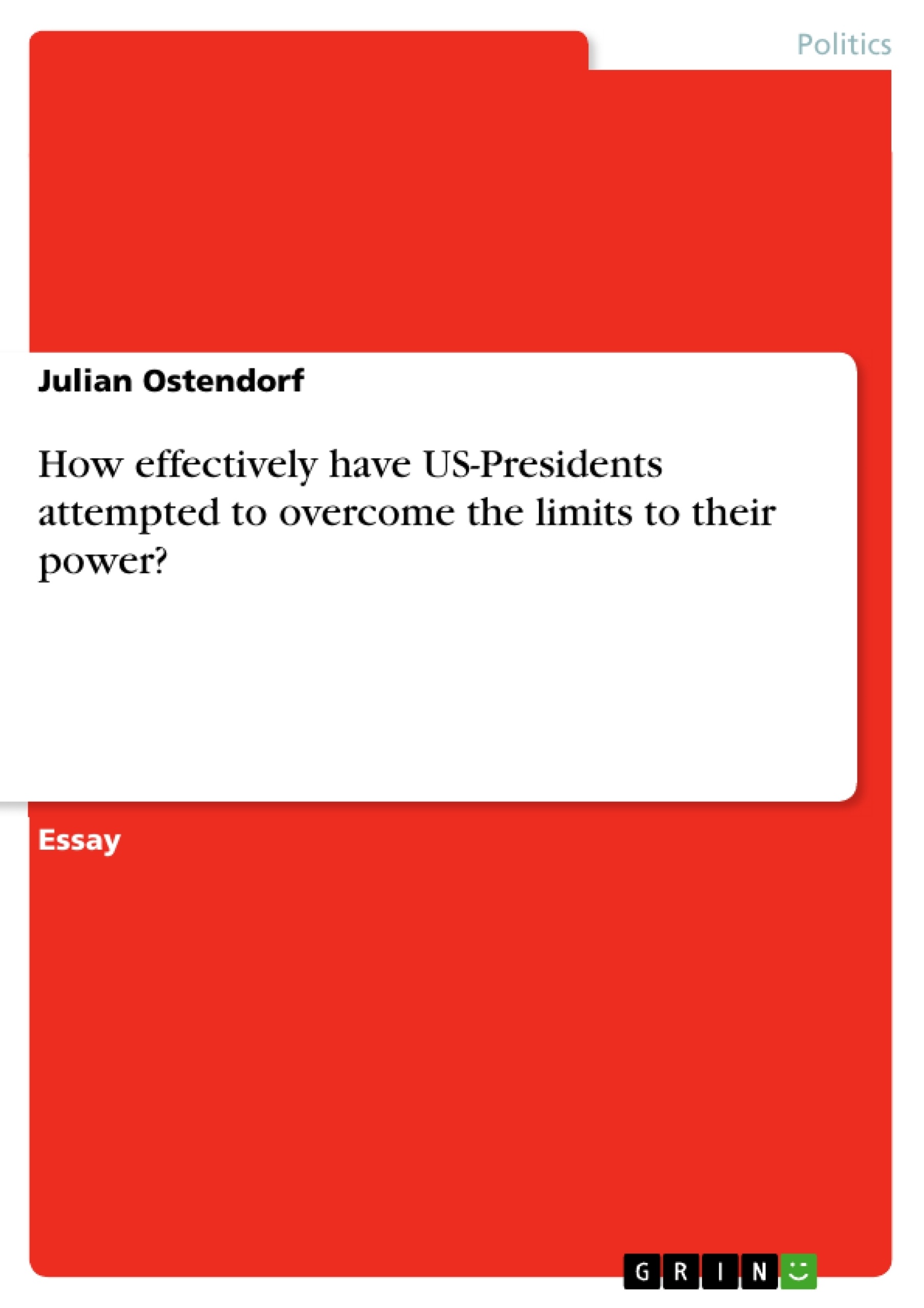Das Essay untersucht die Macht des Präsidenten innerhalb des politischen Systems der USA und zielt darauf ab, systematisch zu untersuchen, wie erfolgreich es Präsidenten nach dem 2. Weltkireg geschafft haben, die "Grenzen" ihrer Macht, die durch das politische System gesteckt werden, zu überschreiten. Damit sind nicht strafbare Handlungen gemeint, sondern die Adaption eines Präsidenten zu den Eigenschaften des politischen Systems, um seine Interessen effektiv umzusetzen.
Inhaltsverzeichnis (Table of Contents)
- Introduction
- Brief Outline of Constitutional Limits
- Congressional Persuasion
Zielsetzung und Themenschwerpunkte (Objectives and Key Themes)
This essay investigates how effectively US Presidents have attempted to overcome the limits to their power. It aims to provide a general perspective on the effectiveness of presidential power, considering both congressional persuasion and the use of executive prerogatives.
- Constitutional limits on presidential power
- The role of congressional persuasion in achieving presidential goals
- The use of executive orders and signing statements as tools to overcome power limits
- The impact of the political environment and public opinion on presidential effectiveness
- The historical evolution of presidential power, particularly after World War II
Zusammenfassung der Kapitel (Chapter Summaries)
- Introduction: This introductory chapter lays out the essay's focus, which is to examine how effectively US Presidents have navigated the limits on their power within the constitutional system of checks and balances. The essay will analyze both congressional persuasion and executive prerogatives.
- Brief Outline of Constitutional Limits: This chapter delves into the constitutional framework that governs the President's power. It outlines the various prerogatives bestowed upon the President, particularly in security and foreign policy matters, while also highlighting the limitations imposed by Congress and the judiciary. Key concepts like presidential signing statements and the balance of power are explored.
- Congressional Persuasion: This chapter examines the President's reliance on congressional persuasion to achieve policy objectives. It draws on Richard Neustadt's thesis, emphasizing the importance of informal power in navigating the political system. The chapter analyzes the influence of public opinion and political environment on presidential effectiveness. The effectiveness of persuasion is illustrated through examples of Presidents Clinton and Johnson and their respective attempts to push through policy agendas.
Schlüsselwörter (Keywords)
This essay focuses on key concepts such as presidential power, checks and balances, congressional persuasion, executive orders, signing statements, public opinion, political environment, and the historical evolution of presidential power in the United States, particularly in the post-World War II era.
- Quote paper
- Julian Ostendorf (Author), 2011, How effectively have US-Presidents attempted to overcome the limits to their power?, Munich, GRIN Verlag, https://www.grin.com/document/174422



